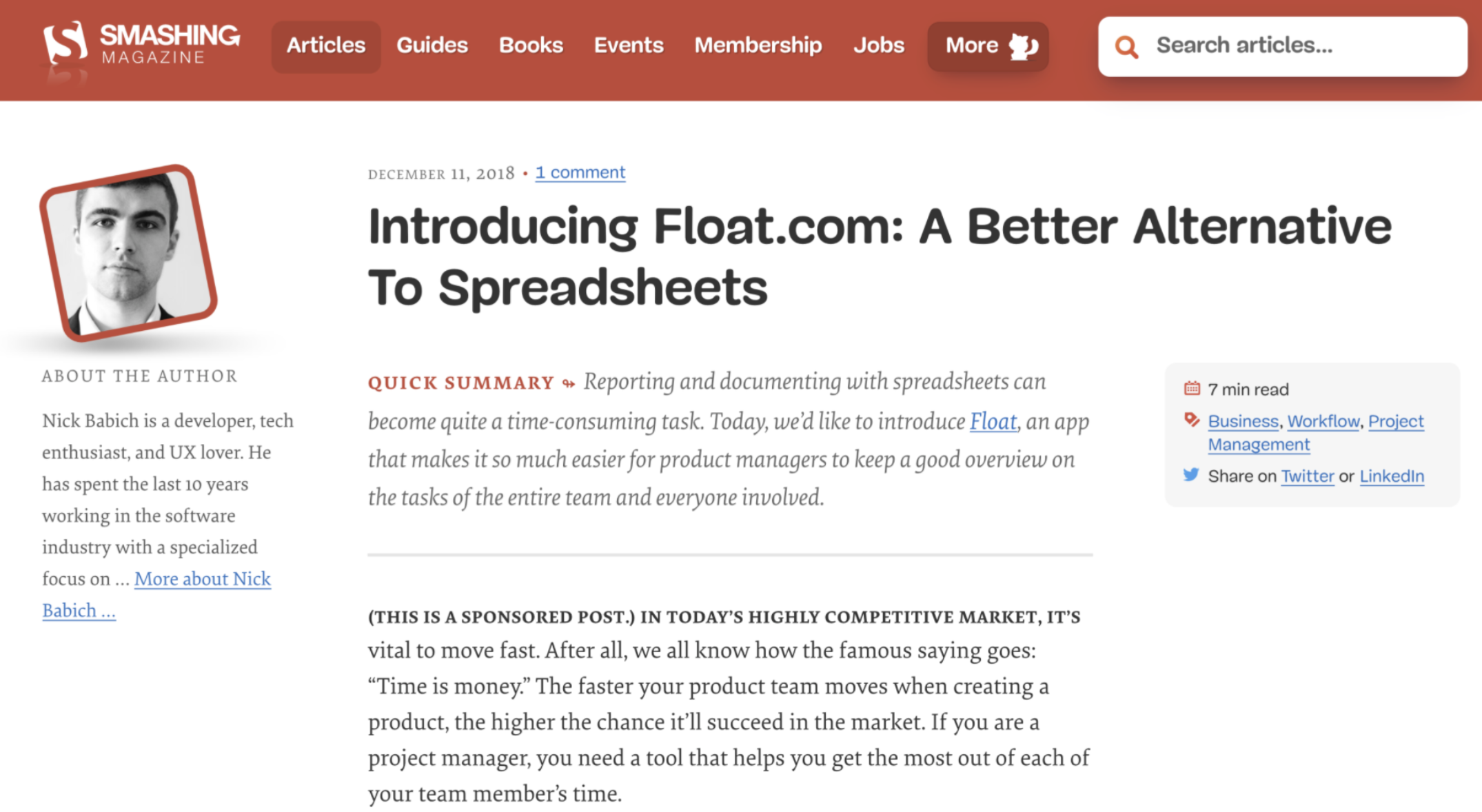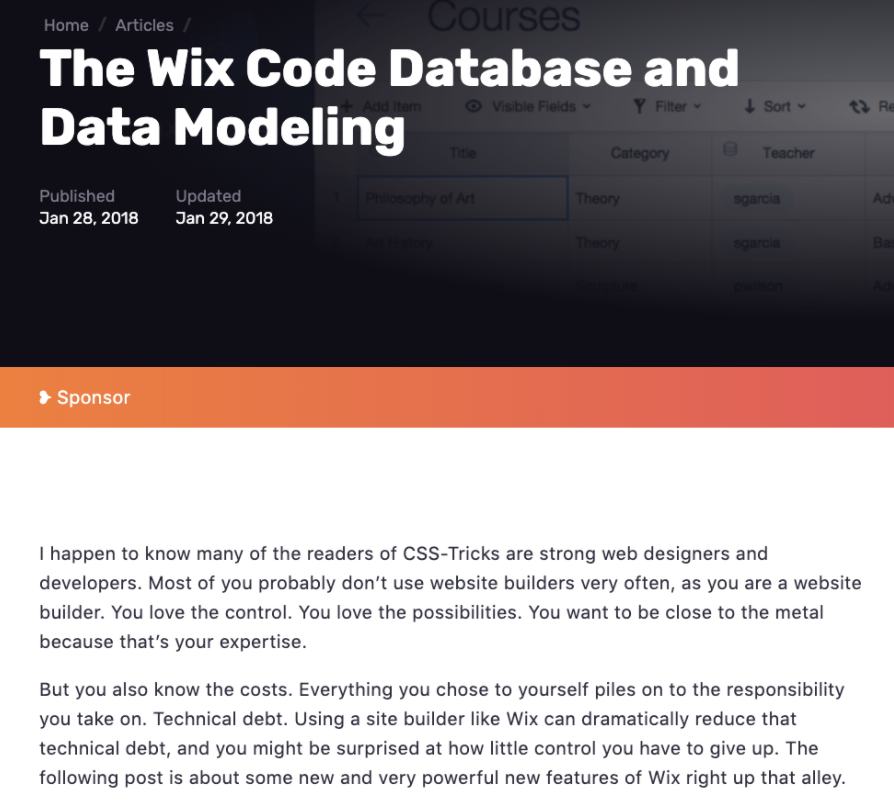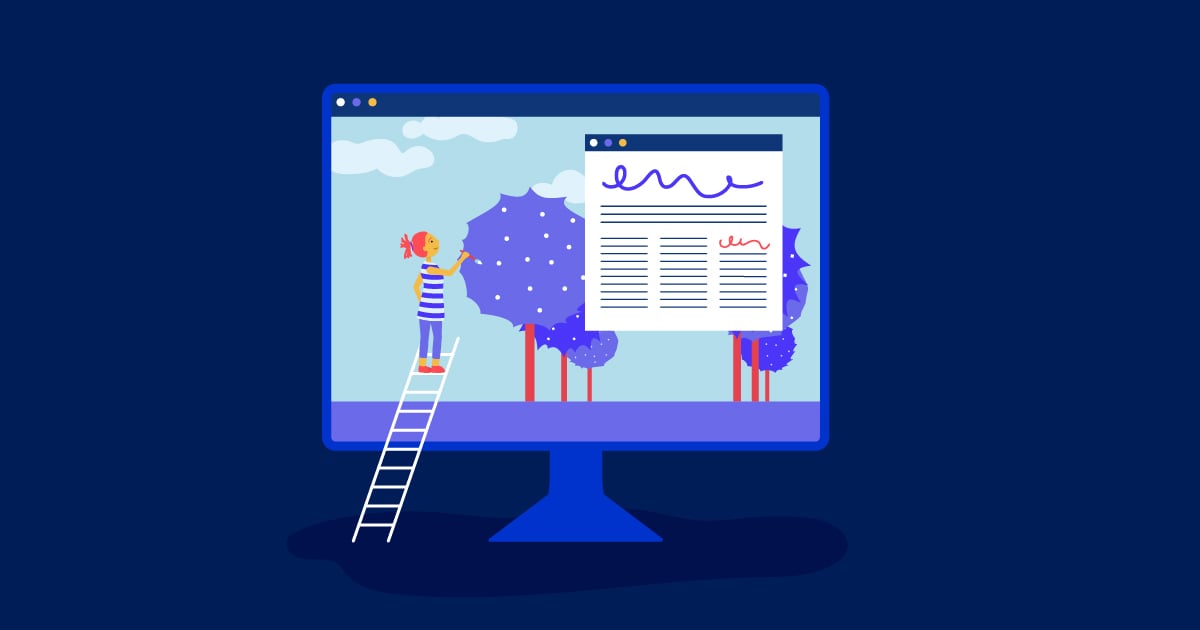Content is king. A phrase tossed around a lot in the marketing world. And it's true. Content can be a powerful way to raise awareness and attract new leads.
But in today's competitive landscape, producing good content alone is no longer enough. These days, marketers need to put in more work to create content and promote it to the right people. It can be a daunting process, especially if you don't have a pre-established audience to work with.
However, there is another way to reap content marketing's benefits without putting in all that work. How? By incorporating sponsored content into your marketing plan.
With sponsored content, marketers have access to an already highly engaged audience through trusted publishers. This is especially useful for marketers who are trying to reach a technical audience like designers.
Sponsored content might be the missing piece to your marketing strategy that will positively grab designers' attention.
Let's explore how.
What is sponsored content
Sponsored content is a type of contextual advertising where a brand pays a publisher to produce and promote content on their behalf.
If you think this sounds a lot like native advertising, you’re not wrong. Both types of placements match the tone, voice, and structure of a publisher's content. However, they are not the same. That's because native advertising is an umbrella term in which sponsored content falls under.
Sponsored content placements don’t look like traditional ads either like some native advertising formats do. Sponsored content comes in different forms, but the most popular (and classic) are in editorial form.
In short, sponsored content campaigns offer marketers a lot more room to work with over other ad formats and gives them access to targeted audiences.
Why sponsored content works well for designers
Consumers love content.
In fact, two-thirds of consumers find content marketing useful and valuable. Furthermore, 82% of consumers ultimately purchased from a brand after consuming their content. And if consumers didn't buy after consuming a brand's content, 53% of them were at least more likely to revisit their website.
So it's safe to say content works. But why is sponsored content such an effective strategy for design audiences specifically?
It’s always relevant
47% of ad block users cited irrelevant and annoying ads as their main reason for implementing an ad blocker.
This makes it pretty clear that contextual relevance in advertising is becoming a critical component for campaign success. Since sponsored content is a form of contextual advertising, it will always fit in with the surrounding content curated by the publisher.
With a contextual advertising strategy like sponsored content, marketers effectively reach their target audience at scale, and consumers are presented with an ad that doesn't feel irrelevant and out of place. Everybody wins.
It provides value
Sponsored content’s primary purpose isn’t to sell something. These campaigns are more about providing value to consumers. That’s why sponsored content’s format is typically in article form— although it can take others.
Sponsored content campaigns allow marketers to share insights and useful information with their audience.
Since the design industry is constantly evolving, designers are always looking for new tools, products, and trends. This makes sponsored content an ideal strategy for marketers to share valuable information that also happens to relate to their brand indirectly.
It extends trust
Trust is the foundation of effective advertising, and these days, it’s getting harder and harder to come by.
When marketers sponsor content from a trusted publisher, they see a 50% higher brand lift than marketers who publish content on their own. It makes sense since marketers partner up with publishers who already have an "in" with their audience. Partnering up with a publisher that has already fostered trust with design audiences automatically extends trust to your brand and boosts credibility.
It’s ad blocker free
Did you know that almost 50% of internet users around the globe use an ad blocker? Users have grown tired of ads. It’s no surprise given the ad-heavy web ecosystem we experience today.
Ad blockers are especially popular among tech-savvy groups that spend a lot of their time online— like designers. So, how can marketers ensure their campaigns aren’t hitting a dead end with ad blockers?
You guessed it, sponsored content.
While traditional ads are placed around a website’s content, sponsored posts are placed within it. Sponsored content goes undetected by ad blockers because it doesn’t actually fall under this category of traditional advertising.
It’s flexible
As far as placements go, sponsored content is extremely versatile in terms of where it can fit in your funnel.
If you want to build brand awareness, take advantage of sponsored content to share general knowledge or tips and tricks within the design industry. Your audience will gain actionable insights while making a positive association with your brand.
Looking to drive more lower-funnel actions like conversions? Use sponsored content to provide in-depth insights into how your brand can help designers and bring it together with an appealing offer like a discount code or free trial.
No matter what stage of the customer journey your audience is at, sponsored content can be leveraged to help you reach your goals.
How to create sponsored content for designers
Designers aren’t the biggest fans of advertising. Whatever you present them with will be met with a lot of skepticism. These tips will help you create a sponsored content campaign that will grab designers' attention.
Show, don’t tell
Using sponsored content to talk at designers won’t work. Instead, use sponsored content to showcase what your brand is all about and how it benefits designers.
What sets your brand apart in the design industry? How will it address designers’ pain points? Does it solve the everyday challenges they face? Answer these questions and create a sponsored campaign that shows them how.
Below is an example of how Float showed why the project planning app was a better alternative to spreadsheet.
Float partnered with Smashing Magazine to address a common problem— time-consuming spreadsheet upkeep— and how their app can eliminate spreadsheets and streamline processes.
You might be tempted to brag about fancy features, but your sponsored post shouldn't sound like an elevator pitch. The best posts make an effort to communicate the human impact behind a product.
Make it valuable & be direct
This goes without saying but, make sure your message is clear and that designers can draw value from the content you're asking them to engage with.
Proving your brand’s value starts with having a deep understanding of their day-to-day and combining that with a clear messaging. Once you have a clear picture of this, you can craft a sponsored content campaign that offers real value.
Of course, this will all depend on your campaign goals. If your campaign goal is to build brand awareness, you might share a how-to article on streamlining design processes related to your brand's offering. Or maybe you're looking to capture leads, so you share a webinar event that dives into best practices or a product tutorial.
Wix’s sponsored post in CSS-Tricks serves as a great example of combining a direct message with actual value to connect with designers.

Wix clearly addresses designers’ hesitations and pain points while also covering how they can eliminate challenges they face— proving Wix’s value.
Whatever your message, always make sure it's clear, and designers can see its value— or else you'll end up losing their attention.
Find the right publishers
Designers are big on community. There are tons of forums, websites, and newsletters on the web specific to the design community. These outlets are where design audiences communicate about projects, share their opinion, and read up on industry news and insights.
This is where you want your ad placement to be 👆. Partnering with popular publishers in the design community will ensure your campaign is reaching the right people and give you that extra trust boost.
To get there, you’ll need to take some time to research potential publishers. While there’s a lot of design-oriented publishers out there, here are some popular ones that offer sponsored content for advertisers: Smashing Magazine, 1st Web Designer, and CSS-Tricks.
Wrapping up
Designers are busy people. They’re typically juggling multiple projects and countless deadlines— all while communicating with their team and keeping stakeholders up to date.
If you want designers to spend time engaging with your brand, you’re going to need to prove its value upfront. By partnering with the right publishers, proving your brand’s value, and showing designers what you can do for them, your sponsored content campaign will grab their attention and quickly gain traction in the design community.


